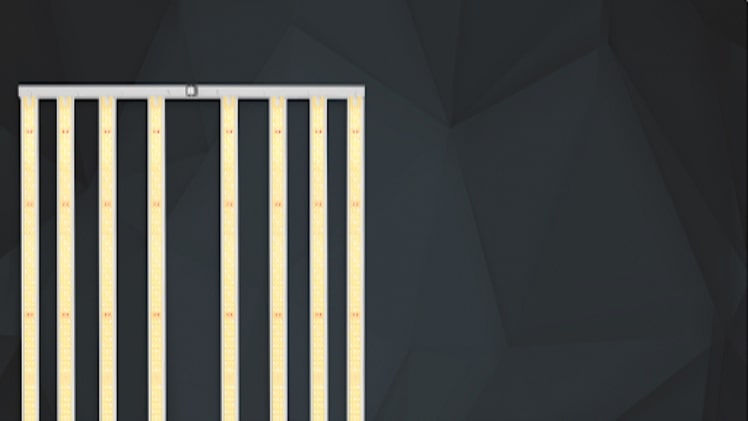The kind of light you use to grow plants is very important for any gardener. With the right light, you can make the difference between a good harvest and a bad one. Due to their many benefits, LED growing lights are becoming more and more popular.
What are LED growing lights?
To grow, plants need light, which comes from the sun in the wild. But if you grow plants indoors, you might not be able to give them natural sunlight. This is why you need grow lights. Grow lights give plants the light they need to grow and do well inside.
There are many kinds of grow lights on the market, but LED growing lights are getting more and more popular. LED growing lights use less energy and don’t give off as much heat as other types of grow lights. This makes them great for small spaces or areas where you can’t open the door.
Not only do LED growing lights use less energy, but they also last longer than other types of grow lights. They also come in many different colors, which can be used to help certain plants grow better.
The benefits of using led growing lights
There are many different kinds of lights that can be used to help plants grow. LED lighting is becoming more and more popular as a way to help plants grow. LED lights are better than traditional incandescent bulbs in many ways, which makes them a great choice for anyone who wants to get the most out of growing plants.
Some of the benefits of growing plants with LED lights are:
- Increased Efficiency: LED lights are much more efficient than traditional incandescent bulbs, meaning they use less energy to produce the same amount of light. This can help you save money on your electricity bill and reduce the amount of carbon dioxide you put into the atmosphere.
Many gardeners say that their plants seem to grow better under LED lights than under other kinds of lighting. This could be because LEDs give off a full spectrum of light, which is what plants need to grow.
- Reduced Heat Output: One problem with traditional incandescent bulbs is that they give off a lot of heat along with the light. This can hurt fragile plants and make it hard to keep the temperature in your grow room at a comfortable level. LEDs don’t give off much heat, which is better for your plants (and your air conditioner).
- Longer Lifespan: LEDs typically have a lifespan several times longer than traditional incandescent bulbs, meaning you won’t have to replace them nearly as often. This can save you both
How to choose the right led growing light
If you want to get the most out of LED growing lights, you need to make sure you get the right one for your needs. Here are some things to think about as you make your choice:
– The type of plants you’re growing: Some plants require more light than others, so be sure to select a light that’s specifically designed for the type of plants you’re growing.
– The size of your grow area: Make sure to select a light that will adequately cover the entire grow area.
– The intensity of the light: Be sure to select a light that emits the right level of light intensity for the plants you’re growing. Plants can’t grow well with either too much or too little light.
Tips for using led growing lights
If you’re thinking about switching to LED growing lights or just want to know what they can do for you, here are a few tips to help you get the most out of your purchase:
1. Choose the right color spectrum for your plants
Even though all LED lights give off some blue and red light (which is needed for photosynthesis), different ratios of these colors can be better for different types of plants. For example, if you’re growing leafy greens, you’ll want a light with more blue light, and if you’re growing flowers, you’ll want one with more red light.
2. Make sure your lights are bright enough
Like regular grow lights, LED lights need to be bright enough to reach the leaves of your plants. The amount of brightness, which is measured in lumens, will depend on the type of LED light and how far away the leaves are from the light.
3. Place your LEDs close to your plants
Traditional grow lights need to be farther away from the plant so they don’t burn the leaves. LEDs, on the other hand, can be placed close to the plant without hurting it. This is because LED growing lights give off much less heat than other types.
4. Use a reflector for even coverage
If you have more than one LED light, you can use a reflector to make sure that all of your plants get the same amount of light.
How to troubleshoot led growing lights
If your LED growing lights are giving you trouble, there are a few things you can do to fix the problem. First, make sure the lights are plugged in and getting electricity. Next, check to see if any of the bulbs are burned out or broken.
If they are, you should buy new ones. Lastly, make sure that the connections between the lights and the power source are tight. If all of these things check out, you might need to talk to a professional to figure out what’s wrong and how to fix it.
Conclusion
If you’re thinking about switching to LED growing lights, we hope this article has shown you the many reasons why you should. LEDs have a lot to offer both indoor and outdoor growers. They save energy and give plants a more natural light spectrum, among other things. Try them out in your own garden and see how they can help your plants grow.

